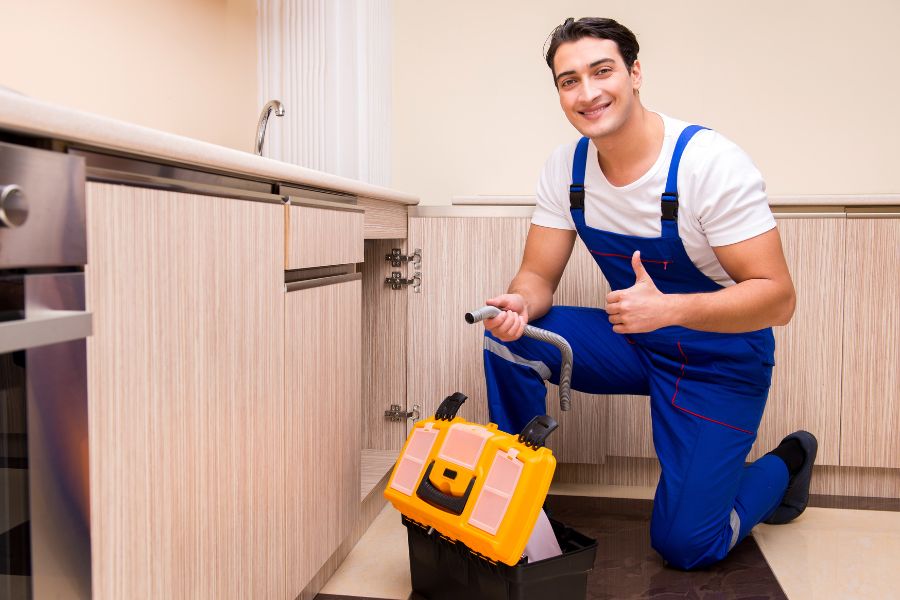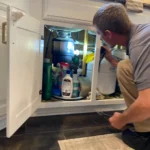A well-functioning water system is crucial for maintaining home water safety. However, lurking within it is an unseen danger—backflow. While water is meant to flow in a single direction from the main supply into your home, certain circumstances can reverse this flow, allowing contaminated water to infiltrate your clean water system. Understanding the importance of backflow prevention is key to safeguarding your family and property from potential health hazards.
The Concept of Backflow
Backflow refers to the undesirable reversal of water flow in a plumbing system. This phenomenon can occur for various reasons, such as sudden changes in water pressure, cross-connections, or faulty plumbing fixtures. When backflow happens, it can lead to contaminated water entering your clean water supply, posing significant health risks. Backflow prevention devices are essential to ensure that your home’s water supply remains uncontaminated and safe for use.
Understanding Backflow
What Causes Backflow?
Backflow occurs when the normal direction of water flow reverses, allowing polluted or contaminated water to enter the clean water supply. This reversal can happen due to changes in pressure within the plumbing system, which may be caused by several factors, including
- A drop in water pressure: This can occur when there’s a sudden demand for water, such as during firefighting efforts or when a water main breaks. The pressure change can cause contaminated water from irrigation systems or pools to flow back into the clean water supply.
- Cross-connections: These are unintended connections between potable water and non-potable water sources. For example, if a garden hose is submerged in a pool, a drop in pressure can cause pool water to be siphoned back into the home’s water supply.
Types of Backflow: Backpressure vs. Backsiphonage
There are two primary types of backflow: backpressure and backsiphonage.
Backpressure
Backpressure occurs when the pressure in a home’s plumbing system exceeds the pressure in the water supply line, pushing water in the wrong direction. This situation often arises in scenarios such as
- Boiler system malfunctions: If the pressure in a boiler exceeds the incoming water pressure, it can cause the contaminated water from the boiler to flow back into the main water supply.
- Pumping systems: When pumps are used for irrigation or other purposes, they can create higher pressure within the plumbing, potentially leading to backflow.
Backsiphonage
On the other hand, backsiphonage results from negative pressure in the supply line, which essentially sucks contaminated water backward into the clean water supply. Common causes include
- A burst water main: If a water main breaks, the sudden drop in pressure can create a vacuum effect that draws water from nearby sources, such as ponds or irrigation systems, back into the drinking water supply.
- Heavy water use in the neighborhood: During peak usage times, such as morning hours when many people are showering or watering their lawns, the demand for water can lead to pressure drops that result in backsiphonage.
Health Risks of Backflow Contamination
Understanding the Risks
The health risks posed by backflow contamination are substantial and cannot be overlooked. Contaminated water can carry pathogens such as bacteria, viruses, and chemicals that lead to severe illnesses. Common health risks associated with backflow contamination include
- Gastrointestinal infections: Consuming contaminated water can lead to symptoms like diarrhea, nausea, and vomiting. Pathogens such as E. coli, Salmonella, and Giardia can easily enter the water supply through backflow.
- Chemical poisoning: Exposure to harmful substances such as fertilizers, pesticides, or industrial chemicals through backflow events can cause severe health complications, including neurological disorders and respiratory issues.
- Long-term health conditions: Continuous exposure to contaminated water can lead to chronic health issues, such as liver damage, kidney problems, and even certain types of cancer.
The Need for Backflow Prevention
Given the potential health risks, backflow prevention is crucial in maintaining home water safety. By implementing effective backflow prevention measures, homeowners can significantly reduce the risk of contamination and protect the health of their families.
Common Causes of Backflow in Residential Areas
Everyday Situations That Lead to Backflow
Backflow can occur due to various seemingly harmless situations that homeowners might overlook. Some common causes include
- Garden hoses: Leaving garden hoses submerged in pools, buckets, or other water sources creates a significant backflow hazard. If there’s a sudden drop in water pressure, pool water can be siphoned back through the hose into the home’s supply.
- Irrigation systems: Improperly installed or maintained irrigation systems can also lead to backflow incidents. Without backflow prevention devices, contaminated water from the irrigation system can easily flow back into the drinking water supply.
- Water features: Fountains, ponds, and other decorative water features can create backflow risks if not adequately protected with backflow prevention devices.
- Faulty plumbing fixtures: Old or malfunctioning plumbing fixtures, such as faucets and toilets, can contribute to backflow incidents if they are not functioning correctly.
Vulnerability in Residential Areas
Residential areas are particularly vulnerable to backflow incidents due to their proximity to water sources like public supply lines, sprinkler systems, and sewer connections. Homeowners must be aware of the potential backflow risks in their vicinity and take appropriate measures to prevent contamination.
Backflow Prevention Devices
Types of Backflow Prevention Devices
To combat the threat of backflow, homeowners can install various backflow prevention devices designed to keep contaminated water out of the clean supply. Some of the most common devices include
- Backflow preventers: These devices consist of valves that automatically close when a reversal in water flow is detected. They are essential for protecting the clean water supply from contamination.
- Air gaps: An air gap physically separates the water supply from potential contaminants by leaving a space between the water outlet and any potential backflow source. This method is highly effective in preventing backflow incidents.
- Reduced Pressure Zone (RPZ) devices: These sophisticated backflow preventers monitor pressure levels within the plumbing system and can automatically shut off water flow if a reversal is detected.
Selecting the Right Backflow Prevention Device
When choosing a backflow prevention device, homeowners should consider their specific water supply needs and the potential risks associated with backflow in their area. Consulting a professional plumber can help identify the most suitable backflow prevention devices for your home.
How Backflow Prevention Devices Work
Mechanisms of Action
Backflow preventers work by creating a barrier that prevents contaminated water from flowing back into the main supply. The mechanisms of action can vary between different types of devices
- Reduced Pressure Zone (RPZ) Backflow Preventers: These devices utilize a valve system to monitor pressure. When a reversal in water flow is detected, the valves automatically seal off water from entering the main supply, effectively preventing contamination.
- Air Gaps: These devices are simple yet highly effective in preventing backflow. By ensuring that there is a physical separation between the water supply and potential contaminants, air gaps prevent any backflow from occurring, regardless of pressure changes.
Importance of Regular Maintenance
Regular maintenance of backflow prevention devices is essential to ensure they function correctly. Homeowners should schedule routine inspections with licensed plumbers to check for wear and tear, mechanical failures, or blockages that could compromise the effectiveness of their backflow prevention systems.
Legal Regulations and Requirements
Understanding Local Regulations
Many municipalities have strict regulations regarding backflow prevention, often requiring homeowners to install and maintain these systems. Compliance with these regulations is essential for several reasons
- Health and Safety: Local authorities enforce backflow prevention regulations to protect public health and ensure that drinking water remains uncontaminated.
- Property Value: Homes that comply with local regulations are often valued higher than those that do not. A property with a robust backflow prevention system is more attractive to potential buyers.
Consequences of Non-Compliance
Failing to comply with backflow prevention regulations can result in several consequences, including
- Fines and Penalties: Homeowners who neglect to install required backflow prevention devices may face fines from local authorities.
- Increased Risk of Contamination: Without proper backflow prevention measures in place, homeowners put themselves and their families at risk of water contamination and associated health issues.
The Role of Professional Inspections
Importance of Regular Inspections
Even the most robust backflow prevention systems require regular inspections to ensure they are functioning properly. Over time, devices can degrade, valves can stick, or other mechanical issues may arise, reducing the effectiveness of your system.
Benefits of Professional Inspections
A professional inspection by a licensed plumber can detect these problems early and recommend repairs or replacements before a backflow event occurs. Benefits of regular professional inspections include
- Peace of Mind: Knowing that your backflow prevention system is regularly checked and maintained gives homeowners confidence in their home water safety.
- Cost Savings: Identifying and addressing issues early can prevent costly repairs or replacements down the line. Regular maintenance can also extend the lifespan of your plumbing system.
Why Backflow Prevention Matters for Long-Term Home Safety
Protecting Your Family and Home
Backflow prevention isn’t just about following the law—it’s about ensuring the long-term safety of your home. Contaminated water can cause extensive damage to your plumbing system and pose significant health risks to your family.
- Investing in Health: By investing in a reliable backflow prevention system and committing to regular inspections, you protect both your home and your loved ones from the dangers of water contamination.
Preserving Property Value
Proper prevention also preserves the value of your home, avoiding costly repairs that can arise from unchecked backflow issues.
- Avoiding Structural Damage: Contaminated water can lead to structural issues within your home if left unaddressed. Investing in backflow prevention measures helps maintain the integrity of your property.
In conclusion, backflow prevention is an essential component of home water safety, providing peace of mind by keeping your water clean and safe. Understanding the risks associated with backflow and implementing effective prevention measures are crucial steps every homeowner should take. By investing in the right devices and committing to regular maintenance, you can ensure that your home remains a secure and healthy environment for years to come. Protect your family and property by prioritizing backflow prevention today.











